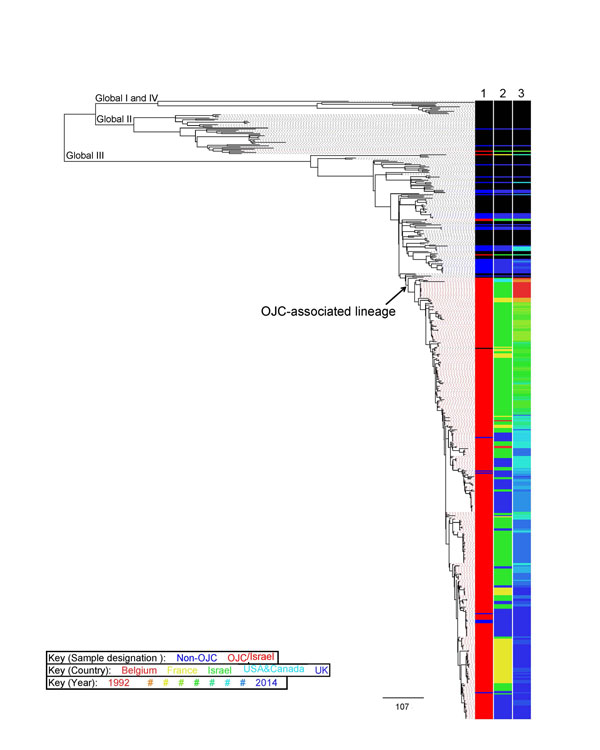Travel- and Community-Based Transmission of Multidrug-Resistant Shigella sonnei Lineage among International Orthodox Jewish Communities
Kate S. Baker, Timothy J. Dallman, Adi Behar, François-Xavier Weill, Malika Gouali, Jeremy Sobel, Maria Fookes, Lea Valinsky, Ohad Gal-Mor, Thomas Connor, Israel Nissan, Sophie Bertrand, Julian Parkhill, Claire Jenkins, Dani Cohen, and Nicholas R. Thomson

Author affiliations: University of Liverpool, Liverpool, UK (K.S. Baker); Wellcome Trust Sanger Institute, Hinxton, UK (K.S. Baker, M. Fookes, J. Parkhill, N.R. Thomson); Public Health England, London, UK (T.J. Dallman, C. Jenkins); Kimron Veterinary Institute, Bet Dagan, Israel (A. Behar); Institut Pasteur, Paris, France (F.X. Weill, M. Gouali); Centers for Disease Control and Prevention, Atlanta, Georgia, USA (J. Sobel); Ministry of Health, Tel Aviv, Israel (L. Valinsky, I. Nissan); Tel Aviv University, Tel Aviv (O. Gal-Mor, D. Cohen); Cardiff University, Cardiff, UK (T.R. Connor); Scientific Institute of Public Health, Brussels, Belgium (S. Bertrand); The London School of Hygiene and Tropical Medicine, London (N.R. Thomson)
Main Article
Figure 2

Figure 2. The OJC-associated lineage of multidrug-resistant Shigella sonnei in context with other global lineages. These background (non-OJC) isolates were contemporaneously collected and selected on the basis of phage typing; that is, including diverse phage types, but focused on representing phage types associated with OJC outbreaks. The midpoint rooted maximum-likelihood phylogenetic tree shows the relationships of 437 sequences from study of travel- and community-based transmission of multidrug-resistant S. sonnei among international OJCs compared with 118 isolates from a global context database of previously defined lineages of S. sonnei. Lineages are labeled along branches. Adjacent tracks are colored according to the inlaid key and show epidemiologic features of the isolate (lane 1, sample designation; lane 2, country; lane 3, year of isolation). Year of isolation is colored on a continuous heat map scale for 1992–2014, shown by hash symbols (#). Scale bar indicates single-nucleotide polymorphisms. OJCs, Orthodox Jewish communities.
Main Article
Page created: August 16, 2016
Page updated: August 16, 2016
Page reviewed: August 16, 2016
The conclusions, findings, and opinions expressed by authors contributing to this journal do not necessarily reflect the official position of the U.S. Department of Health and Human Services, the Public Health Service, the Centers for Disease Control and Prevention, or the authors' affiliated institutions. Use of trade names is for identification only and does not imply endorsement by any of the groups named above.
